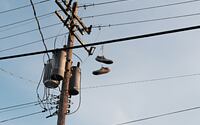3 Ways A Business Can Conserve Water
Water is a precious resource; it is fast becoming a resource that is facing shortages. As a business in today’s market, it is important to be seen as a sustainable business that understands the importance of water. Controlling your use of water vans also is a way that the business can reduce its expenditure in the year.

What is Wastewater?
Wastewater has become a more common term in the last few years. Wastewater is the term used to define water that has been used by humans and consequently has become contaminated. This is a term that covers almost all forms of water usage, from hand washing to water being used in machinery or equipment.
Wastewater is any water that humans use has contaminated; there a whole range of wastewater types, some of the types of wastewater are:
– Washing Hands
– Flushing of Toilets
– Using water on a business’ landscape- a garden, for example
These are just a few examples of wastewater that a business can have. Of course, you cannot stop washing your hands or using the toilet, but you can reduce how much water is used in these processes.
Ways A Business Can Conserve Water
Water is essential for our everyday life. It is therefore impossible to cut out water usage from our businesses; however, there are steps that can be taken to reduce how much water you use.
Water Audits
According to some sites like utility bidder conducting, water audits can be helpful in recognizing where and how much water a business is using. A water audit allows an independent body to closely monitor a business and provide them with specifically tailored solutions to their problems.
They are there solely for the business’ benefit; for example, they point to which department of a business is wasting the most water, or perhaps they may identify faulty machinery that is causing the surge in water wastage.
By identifying the problem areas of the business, not only are they making the business more environmentally sustainable but also saving them energy costs.
Changing Water Installations
Upgrading to the use of low-flow installations is a sure-fire way to save water. Standard water faucets use almost 2.2 gallons of water per minute, whereas a low-flow faucet aerator only uses 1.5 gallons. Low-flow restrictors can be used anywhere from lunchroom faucets to restrooms and even in showers. Upgrading toilets to newer models that are more efficient saves 3 gallons of water as older toilets use 5 gallons and newer ones use 2.
Involve Your Employees
Employees make up the foundation of a business; if you wish to make a visible difference in your water consumption, then you need to involve your employees. Informing them about the changes you need to make and including their input in the process is a great way to reduce water consumption.
Employee’s efforts in reducing their daily water consumption will add to the business’ overall reduction in water consumption.
Water is an incredibly important resource that needs to be used wisely. Businesses should take active efforts to reduce their consumption of water. Not only does it decrease the business’s water costs, but it also portrays the business as an environmentally conscious entity.
- by Matt Watts



